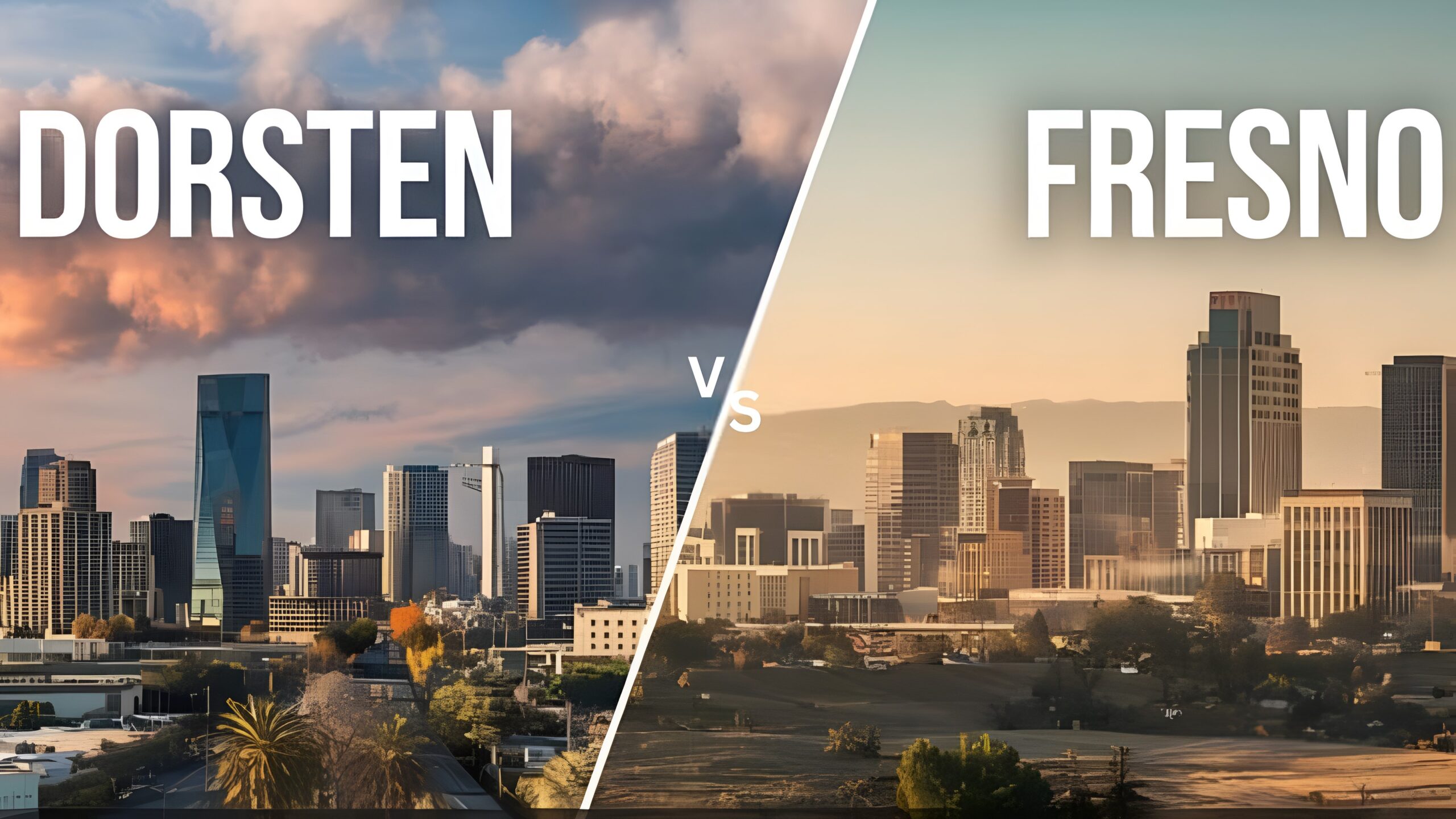Introduction
(Dorsten vs Fresno pollution coparament) pollution is a pressing global concern, and its impact varies significantly from one region to another. This article delves into a detailed comparison of pollution in two distinct cities: Dorsten, Germany, and Fresno, California. Despite being thousands of miles apart, both cities face unique environmental challenges that affect their air quality and residents’ health. This analysis will explore the sources of pollution, the types of pollutants prevalent in each city, their health impacts, and ongoing initiatives to combat pollution.
Understanding Dorsten vs Fresno pollution coparament
Pollution encompasses a wide range of environmental issues, including air, water, and soil contamination. Air pollution is particularly detrimental to human health and the environment, affecting respiratory systems and contributing to climate change. The World Health Organization (WHO) reports that air pollution is responsible for millions of premature deaths each year, emphasizing the urgent need for effective pollution management strategies.
Overview of Dorsten
Geography and Demographics
Dorsten is a charming town located in North Rhine-Westphalia, Germany. Known for its rich history and picturesque landscapes, Dorsten has a population of approximately 77,000 residents. Its location near significant industrial hubs like Duisburg and Gelsenkirchen makes it susceptible to pollution from nearby industrial activities.
Pollution Sources in Dorsten
Industrial Emissions
One of the primary sources of pollution in Dorsten is industrial emissions. The town’s proximity to major industrial centers means that residents are often exposed to pollutants released by factories and power plants. These emissions primarily include nitrogen dioxide (NO2) and particulate matter (PM10 and PM2.5), both of which are linked to various health issues.
Traffic Pollution
Traffic is another significant contributor to Dorsten’s pollution problem. The increasing number of vehicles on the roads leads to higher emissions of harmful gases and particulate matter. During colder months, heating emissions can further exacerbate air quality issues, particularly in residential areas.
Overview of Fresno(dorsten vs fresno pollution coparament)
Geography and Demographics
Fresno is situated in the heart of California’s San Joaquin Valley and is known for its agricultural significance and proximity to national parks. With a population exceeding 530,000, it is one of the largest cities in California. Fresno’s geography, characterized by mountains to the east and a flat valley, plays a crucial role in its pollution problems.
Pollution Sources in Fresno
Agricultural Activities
Agriculture is a major industry in Fresno, contributing significantly to its economy. However, it also serves as a substantial source of pollution. Pesticides and fertilizers used in farming release harmful chemicals into the air and water, adversely affecting air quality. Additionally, the burning of agricultural waste is common in the region, leading to increased levels of particulate matter.
Vehicle Emissions
Fresno is notorious for its heavy traffic, which significantly impacts air quality. Vehicle emissions are a primary source of nitrogen oxides (NOx) and volatile organic compounds (VOCs), which contribute to the formation of ground-level ozone—a critical air pollutant that poses serious health risks.
Comparative Analysis of dorsten vs fresno pollution coparament
Air Quality Index (AQI)
The Air Quality Index (AQI) is a crucial metric used to assess air quality and its associated health effects. Generally, an AQI below 50 indicates good air quality, while levels above 150 signal unhealthy conditions.
Dorsten’s Air Quality
In Dorsten (dorsten vs fresno pollution coparament), air quality levels fluctuate throughout the year, primarily influenced by industrial emissions and traffic. The city’s AQI often ranges from moderate to unhealthy, especially during winter months. Despite not being among Germany’s most polluted cities, residents frequently experience air quality alerts due to elevated levels of NO2 and particulate matter.
Fresno’s Air Quality
Fresno frequently ranks among the most polluted cities in the United States. The AQI often reaches unhealthy levels, particularly during the summer months when smog from ozone formation peaks. The city’s geographical characteristics, combined with emissions from agriculture and vehicles, contribute to its poor air quality.
Types of Pollutants
Understanding the types of pollutants prevalent in each city is essential for evaluating their environmental impact.
Common Pollutants in Dorsten
- Nitrogen Dioxide (NO2): Emitted primarily from vehicles and industrial processes, NO2 contributes to respiratory problems and the formation of ground-level ozone.
- Particulate Matter (PM10 and PM2.5): These tiny particles can penetrate deep into the lungs and enter the bloodstream, leading to cardiovascular and respiratory diseases.
Common Pollutants in Fresno
- Ozone (O3): Formed when sunlight reacts with pollutants like NOx and VOCs, ozone is a major air quality concern in Fresno, especially during summer months.
- Particulate Matter (PM10 and PM2.5): Agricultural practices, vehicle emissions, and wildfires contribute to high levels of particulate matter in Fresno, posing serious health risks.

Health Impacts of Pollution(dorsten vs fresno pollution coparament)
Both Dorsten and Fresno face significant health challenges related to air pollution. The adverse effects of exposure to pollutants can lead to various respiratory and cardiovascular issues, highlighting the importance of addressing pollution in both cities.
Health Issues in Dorsten
Residents of Dorsten are at risk of experiencing respiratory illnesses due to elevated levels of NO2 and particulate matter. Studies indicate that long-term exposure to these pollutants can lead to chronic conditions such as asthma and lung cancer.
Health Issues in Fresno
Fresno’s residents contend with serious health risks linked to its poor air quality. The prevalence of asthma, chronic bronchitis, and other respiratory conditions is notably higher in Fresno compared to other U.S. city. Moreover, the state’s high rates of hospitalizations due to respiratory illnesses can be attributed to the city’s persistent air quality issues.
Efforts to Combat Pollution
Initiatives in Dorsten
Dorsten has implemented various initiatives to improve air quality and mitigate pollution. The local government promotes the use of public transportation, cycling, and walking to reduce traffic emissions. Furthermore, efforts to transition to cleaner energy sources and enhance industrial regulations are underway to minimize emissions from factories.
Initiatives in Fresno
In Fresno, several strategies aim to combat pollution and improve air quality. The city has invested in public transportation systems to reduce reliance on personal vehicles, thereby lowering traffic-related emissions. Additionally, initiatives promoting sustainable agricultural practices aim to mitigate the environmental impact of farming.
Future Challenges and Prospects
While both dorsten vs fresno pollution coparamento have made strides in addressing pollution, significant challenges remain.
Challenges in Dorsten
Dorsten must continue to confront pollution from industrial sources while balancing economic growth and environmental sustainability. The need for stricter regulations on industrial emissions and continued investment in public transportation will be crucial to improving air quality in the region.
Challenges in Fresno
Fresno faces ongoing challenges related to its geography and climate, which can exacerbate pollution issues. Strategies to mitigate wildfires and enhance air quality monitoring are essential to protect public health in the region. Furthermore, ongoing efforts to address the root causes of pollution, such as vehicle emissions and agricultural practices, will require collaboration among local governments, industries, and communities.
Conclusion
The comparison of pollution levels in dorsten vs fresno pollution coparament highlights the complex interplay between industrial activities, urban development, and environmental health. While both cities face significant air quality challenges, their unique characteristics and sources of pollution offer distinct insights into the global issue of environmental degradation. Ongoing efforts to improve air quality and protect public health will be essential for creating healthier, more sustainable communities in both Dorsten and Fresno.
By fostering awareness, promoting cleaner practices, and investing in innovative solutions, these cities can pave the way for a cleaner, healthier future for their residents.
